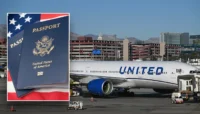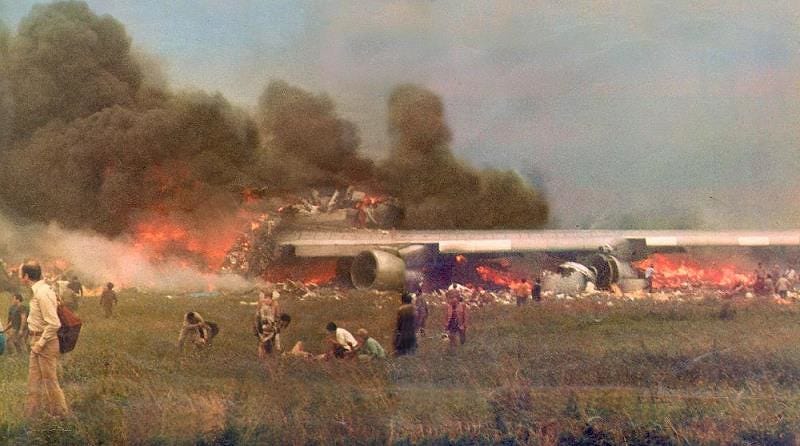On March 27, 1977, aviation history witnessed its deadliest accident when two Boeing 747s collided on the runway of Los Rodeos Airport (now Tenerife North Airport) in the Canary Islands. The disaster claimed the lives of 583 people and reshaped aviation safety forever. This is the extensive story of how miscommunication, weather conditions, and unfortunate circumstances led to this catastrophic event.
Background: A Day of Unexpected Changes
Both aircraft involved in the accident were Boeing 747s, operated by KLM Royal Dutch Airlines and Pan American World Airways. The disaster occurred after a terrorist bombing at Gran Canaria Airport diverted numerous flights, including KLM Flight 4805 and Pan Am Flight 1736, to Los Rodeos Airport, a smaller airport with limited infrastructure.
As multiple aircraft waited at Los Rodeos, heavy fog reduced visibility on the single runway. The congestion forced aircraft to park on the taxiway, requiring departing planes to taxi on the runway itself, an unusual but necessary procedure.
The Chain of Events Leading to Disaster
Taxiing in Low Visibility
After receiving clearance, the Pan Am aircraft was instructed to follow the KLM plane down the runway but to exit at the third taxiway to clear the path. However, due to poor visibility, the Pan Am crew struggled to locate the exit.
Meanwhile, the KLM 747, having refueled, prepared for takeoff. Its captain, Jacob Veldhuyzen van Zanten, an experienced pilot and KLM’s chief flight instructor, was under pressure due to duty time limitations. After receiving what he believed to be clearance from air traffic control, he initiated takeoff while the Pan Am aircraft was still taxiing on the runway.
Miscommunication and the Critical Seconds
The crucial miscommunication stemmed from conflicting messages between the KLM cockpit and air traffic control. The KLM first officer requested takeoff clearance, but the controller responded with a phrase that was not an explicit go-ahead: “Stand by for takeoff, I will call you.” However, due to simultaneous radio transmissions, the Pan Am crew’s warning that they were still on the runway was lost in static.
The Collision
As the KLM plane reached its takeoff speed, the Pan Am aircraft suddenly emerged from the fog. In a desperate attempt to avoid collision, the KLM captain pulled back sharply, causing the aircraft to briefly lift off. However, the underbelly of the KLM jet struck the Pan Am 747, tearing through its fuselage. The KLM aircraft became airborne but stalled and crashed just beyond the runway.
The Pan Am aircraft, engulfed in flames, was completely destroyed. Out of 396 passengers and crew onboard, only 61 survived. Everyone aboard the KLM aircraft—248 people—perished.
Investigation and Lessons Learned
Key Findings
- Communication Breakdown – The primary cause of the accident was miscommunication between the KLM pilots and air traffic control.
- Human Factors – The pressure on the KLM captain, combined with poor visibility, led to a rushed decision.
- Lack of Standardized Phraseology – The ambiguous use of “takeoff” in conversations contributed to the misunderstanding.
- Airport Infrastructure Limitations – The lack of ground radar and congestion issues at Los Rodeos added to the complexity.
Impact on Aviation Safety
The Tenerife disaster resulted in sweeping changes in aviation safety protocols, including:
- Standardized Radio Communications – The phrase “Takeoff” is now only used when an aircraft is explicitly cleared for departure.
- Crew Resource Management (CRM) – Pilots are trained to challenge each other’s decisions and communicate assertively.
- Improved Air Traffic Control Procedures – Strict rules were introduced to ensure clear and unambiguous instructions between pilots and controllers.
The Tenerife Airport Disaster remains a somber reminder of the importance of clear communication, human factor awareness, and stringent safety protocols in aviation. Every modern pilot and air traffic controller learns from this tragedy, ensuring that such an event never happens again. While aviation is safer today than ever before, the lessons from Tenerife continue to shape the industry, proving that even the worst disasters can lead to critical improvements that save lives.








